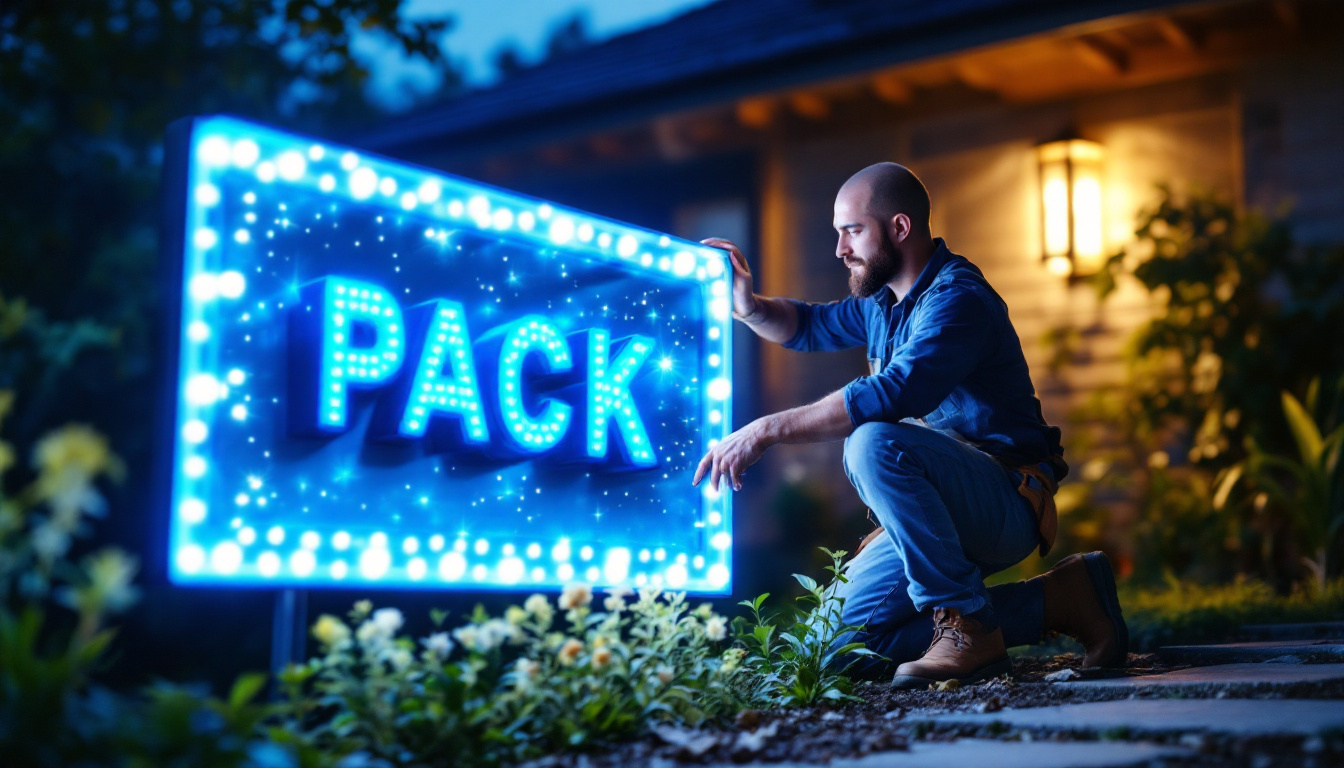
LED Tube T8 lighting has become a cornerstone in modern commercial and industrial lighting projects. These tubes offer significant advantages over traditional fluorescent tubes, including energy efficiency, longer lifespan, and reduced maintenance costs. However, despite their popularity, many lighting contractors encounter costly mistakes during installation and specification that can undermine these benefits.
Before diving into project execution, it’s critical to understand what makes LED Tube T8s unique. Unlike fluorescent tubes that rely on mercury vapor and electrodes, LED tubes use semiconductor diodes to emit light. This fundamental difference means they require different electrical configurations and have distinct performance characteristics.
Moreover, LED Tube T8s come in various types—such as direct wire (ballast bypass), plug-and-play (compatible with existing ballasts), and hybrid models—each with specific installation requirements. Selecting the wrong type or misunderstanding compatibility can lead to premature failure, safety hazards, or increased operational costs.
In addition to their varied configurations, LED Tube T8s also offer a range of color temperatures, which can significantly influence the ambiance and functionality of a space. From warm white (around 3000K) that creates a cozy atmosphere in restaurants and retail environments to cool white (5000K and above) that enhances visibility in warehouses and manufacturing facilities, the choice of color temperature can impact not only aesthetics but also employee productivity and mood. Understanding the psychological effects of light can help contractors make informed decisions that align with the specific needs of their projects.
Furthermore, the dimming capabilities of LED Tube T8s are another factor worth considering. Many modern LED tubes are designed to be compatible with dimming systems, allowing for greater flexibility in lighting design. This feature can be particularly beneficial in multi-purpose spaces where lighting needs may vary throughout the day. Incorporating dimmable LED tubes can lead to additional energy savings and enhance the overall user experience by providing the ability to adjust lighting levels based on activity or time of day.
One of the most frequent errors contractors make is assuming that all LED Tube T8s will work seamlessly with existing fluorescent ballasts. While plug-and-play tubes are designed to be compatible, ballast types vary widely, and not all LED tubes support every ballast model. Installing an incompatible tube can result in flickering, reduced lifespan, or even electrical damage.
Furthermore, ballasts themselves can be a hidden source of energy loss and maintenance headaches. Some projects benefit more from removing the ballast entirely and opting for direct wire LED tubes, but this requires rewiring and adherence to local electrical codes. It’s also worth noting that the choice of ballast can affect energy efficiency; electronic ballasts tend to be more efficient than magnetic ones, which can lead to significant savings over time. Understanding the specific needs of the lighting project can help in selecting the right components and avoiding unnecessary costs.
Compliance with electrical and safety regulations is non-negotiable. Contractors who overlook local codes risk costly rework, fines, or liability issues. For example, direct wire LED tubes require the removal or bypassing of fluorescent ballasts, which must be done in accordance with the National Electrical Code (NEC) or equivalent standards.
Additionally, improper wiring can create shock hazards or fire risks. Ensuring that all installations are performed by qualified electricians and inspected thoroughly can prevent these dangerous outcomes. Regular training and updates on safety protocols for the installation team can also mitigate risks. Moreover, documenting compliance with safety codes can serve as a valuable asset during inspections or audits, providing peace of mind and ensuring that the project meets all necessary standards.
LED Tube T8s vary in color temperature, color rendering index (CRI), and lumen output. Selecting a tube with inappropriate light quality for the application can negatively impact occupant comfort and productivity. For instance, a cold white (5000K) light might be suitable for warehouses but too harsh for office environments where warmer tones (3000K-4000K) are preferred.
Moreover, lumen output must match the lighting requirements of the space. Over-lighting wastes energy and causes glare, while under-lighting can compromise safety and functionality. Conducting a proper lighting design analysis is essential to avoid these pitfalls. This analysis should take into account not only the intended use of the space but also the demographics of its users. For example, spaces frequented by elderly individuals may require higher lumen outputs and warmer color temperatures to enhance visibility and comfort. Additionally, integrating smart lighting controls can further optimize energy use and adapt to varying occupancy levels, ensuring that the lighting is both effective and efficient.
Before specifying or installing LED Tube T8s, conduct a comprehensive site assessment. This includes identifying existing fixtures, ballast types, wiring conditions, and lighting requirements. Understanding the current infrastructure helps determine whether plug-and-play, direct wire, or hybrid LED tubes are the best fit.
Additionally, assess the physical condition of fixtures. Aging or damaged fixtures may need replacement rather than retrofitting to ensure optimal performance and safety. During this assessment, it is also beneficial to gather input from building occupants regarding their lighting preferences and any specific issues they face with the current setup. This feedback can guide the selection of color temperature and brightness levels, ensuring that the new lighting meets both functional and aesthetic needs.
Not all LED Tube T8s are created equal. Investing in high-quality tubes from reputable manufacturers can save money over time by reducing failures and maintenance needs. Look for products that carry certifications such as UL, DLC, or Energy Star, which indicate compliance with industry standards and energy efficiency benchmarks.
Also, consider warranties and technical support. A strong warranty and responsive customer service can be invaluable if issues arise post-installation. Furthermore, it’s wise to research the manufacturer’s reputation in the industry by reading reviews and case studies. Understanding how their products have performed in similar applications can provide insight into their reliability and effectiveness in real-world scenarios.
Installation should be carried out by trained professionals familiar with LED technology and electrical codes. Proper wiring, fixture compatibility, and secure mounting are critical to long-term success. It’s also essential to ensure that all safety protocols are followed during installation to prevent accidents and ensure compliance with local regulations.
After installation, perform thorough testing to verify that all tubes operate correctly without flicker, noise, or dimming issues. Measuring actual light levels and comparing them to design specifications ensures the project meets client expectations. Additionally, consider implementing a follow-up maintenance schedule to regularly check the performance of the LED tubes and address any potential issues before they escalate. This proactive approach not only extends the lifespan of the lighting system but also enhances overall energy efficiency, contributing to lower operational costs over time.
One of the primary motivations for switching to LED Tube T8 lighting is energy savings. LEDs consume significantly less power than fluorescent tubes—often reducing energy consumption by 40-60%. However, these savings can be negated if the wrong product is selected or if installation errors lead to premature failures.
Lifecycle cost analysis should factor in not only initial purchase and installation costs but also energy consumption, maintenance, and replacement expenses over the expected lifespan. LED tubes typically last 50,000 hours or more, compared to 10,000-15,000 hours for fluorescents, which translates to fewer replacements and labor costs.
Contractors who provide clients with detailed lifecycle cost projections demonstrate professionalism and help clients make informed decisions that maximize return on investment.
A large warehouse attempted to retrofit its fluorescent lighting with plug-and-play LED Tube T8s without verifying ballast compatibility. The result was widespread flickering and early tube failures, leading to costly rework and downtime. A subsequent assessment revealed that the existing ballasts were incompatible with the LED tubes selected.
The solution involved removing the ballasts and installing direct wire LED tubes, which resolved the issues and improved energy savings. This case underscores the importance of upfront compatibility checks and the potential benefits of ballast bypass solutions.
An office building upgraded to LED Tube T8s but selected tubes with a high color temperature (6000K), resulting in a cold, sterile environment that employees found uncomfortable. Productivity and satisfaction declined, prompting a costly replacement with warmer color temperature tubes.
This example highlights the need to consider human factors such as color temperature and CRI in lighting design, not just energy efficiency.
LED Tube T8 lighting offers compelling benefits for contractors and clients alike, but only when projects are executed with careful planning and technical knowledge. Avoiding common mistakes—such as ignoring ballast compatibility, neglecting electrical codes, and overlooking light quality—can prevent costly rework and ensure client satisfaction.
By conducting thorough site assessments, selecting quality products, adhering to best installation practices, and considering lifecycle costs, lighting contractors can deliver efficient, safe, and comfortable lighting solutions. In an industry where technology evolves rapidly, staying informed and meticulous is the key to successful LED Tube T8 projects.
Ready to elevate your lighting projects with the best LED Tube T8s on the market? Look no further than LumenWholesale, where we provide contractors with the highest quality, spec-grade lighting products at unbeatable wholesale prices. Say goodbye to unnecessary markups and hello to a vast selection of industry-standard lighting solutions that promise reliability and high performance for every project. With LumenWholesale, bulk buying is a breeze, and with free shipping, you can rest assured that you’re getting premium lighting at the best value — without any hidden fees. Don’t compromise on quality, affordability, or convenience. Make the smart choice and experience Wholesale Lighting at the Best Value today with LumenWholesale.

Discover the key benefits and features of 150-watt LED lamps that every lighting contractor should know.

Discover expert tips and insights for lighting contractors on selecting and installing outdoor motion lights.

Explore how dusk till dawn exterior lights are revolutionizing the work of lighting contractors by offering seamless, energy-efficient solutions.

Discover essential tips for lighting contractors to seamlessly integrate 2 pack solar light signs into projects.